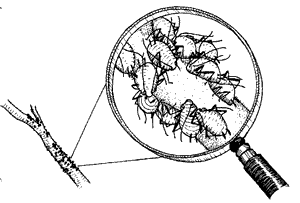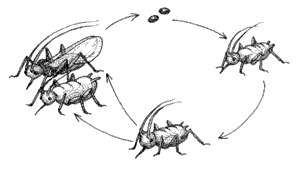Identifying Aphids
 |
There are more than 4,000 known species of aphids, but they all share certain characteristics. At 1/10 inch long, they are about the size of the head of a pin. Their distinctive soft, pear-shaped bodies are most commonly green or black, but they may also be brown, pink, yellow, red, or even lavender. Some of their other common names are greenfly, blackfly, and plant louse. All aphids have long antennae and two tubelike projections at the rear of their abdomens. They may or may not have wings. The pests attack tender plant parts such as buds, tender new leaves and stems, or seedlings, sucking the juices from cell tissues. As they feed, they excrete large amounts of excess sugars and sap, called honeydew. This honeydew encourages growth of sooty molds, and is especially attractive to ants, who will collect aphids in “herds” and protect them from their natural enemies in order to enjoy the honeydew themselves. Another type of aphid attacks plant roots as well
Besides injuring plants by their feeding behavior, aphids spread many different plant virus diseases. The green peach aphid, the most important aphid in this regard, is known to transmit over 100 virus diseases to plants in about 30 different families.
Their Growth Stages
 |
While adult aphids are killed by frost, their eggs overwinter on plant surfaces and garden debris. In the spring newly hatched wingless females begin to rapidly reproduce, bearing live, female young without any male intervention--a process called parthenogenesis. When mature, these new females themselves bear more live female young from eggs already in their bodies. Those with wings disperse to neighboring plants and bear even more young. If conditions are ideal, there may be a dozen generations a season. Only those aphids born toward the fall, with its shortening day length and lowering temperatures, are able to develop into winged males to fertilize the eggs which will overwinter to begin the cycle anew the next spring.
In warmer climates, aphids reproduce all year long. In the North, the overwintering eggs hatch at the end of May or early June, at a fairly predictable time in your yard every year. Inspect the undersides of leaves for new aphids or their ant companions starting at this time.

